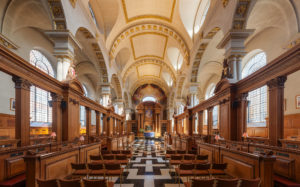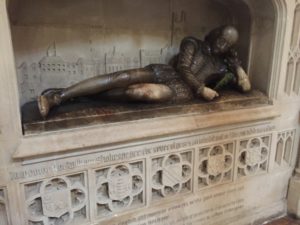
For almost a millennium, the Tower of London has stood watch over the city, a symbol of William the Conqueror who built it. Few buildings evoke such a mixture of emotions, The Tower has served as royal residence, prison, armory, mint, torture chamber, and even a menagerie of exotic animals presented to British monarchs.
In 2014, to mark the 100thanniversary of the start of World War I, the Tower was host to one of the most remarkable art installations ever – the planting of ceramic poppies in the moat, one for each casualty of the warm until almost 900,000 had been placed by that November.

From the time of William I to Charles II in 1660, the Tower served another purpose – the start of the coronation procession for each British monarch. Charles II was the last; his brother James II, something of a closet Catholic, was supposedly crowned privately in a Catholic ceremony and then proceeded from Whitehall Palace to Westminster Abbey for the “protestant coronation.” No monarch after that did the Tower to Westminster procession.
In my novel Dancing King, Michael and Sarah Kent-Hughes return to the earlier tradition, with a procession starting from the Tower and ending at Westminster Abbey. It’s a considerably longer route than what the real British monarchs do today, riding from Buckingham Palace to the Abbey.
Right as the procession begins, Sarah asks about how the street names will change. And they do – Tower Hill, Great Tower Street, Eastcheap, Cannon Street, St. Paul’s Churchyard, Ludgate Hill, Fleet Street, and the Strand are essentially the same thoroughfare. The change in names is a kind of record of a lot of London history.
Michael reminds Sarah of what they’re returning to the earlier tradition of leaving from the Tower, and he cites two reasons.
First, the longer route affords many more people to see the king and queen in the procession. The route stretches from the Tower, through the City of London (the business district), past St. Paul’s Cathedral and then Fleet Street, past the Royal Courts of Justice, then the Strand, just skirting London’s theatre district. It continues on the Strand past Charing Cross Station to Trafalgar Square, down Whitehall to the Parliament building, and then a short turn to Westminster Abbey.
 Many a time have my wife and I ridden the iconic double-decker bus along that route.
Many a time have my wife and I ridden the iconic double-decker bus along that route.
Second, Michael explains that proceeding through the business district, the theatre district, and the center of legal practice shows that the Crown recognizes the importance of these industries and professions – business, banking, law, and the theatre – to British national life. The coronation of a new king isn’t only about a new monarch; it’s a celebration of what matters and what’s important to the British nation. It’s about history and tradition, yes, but it’s also about the future.
It’s never explicitly stated, but Michael Kent-Hughes is beginning the process of becoming the “People’s King.”
Top photograph: The Tower of London as seen from the Thames River, with the White Tower in the center. Photo courtesy of Wikimedia.























